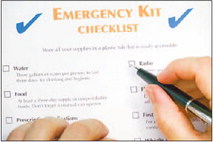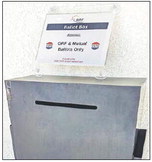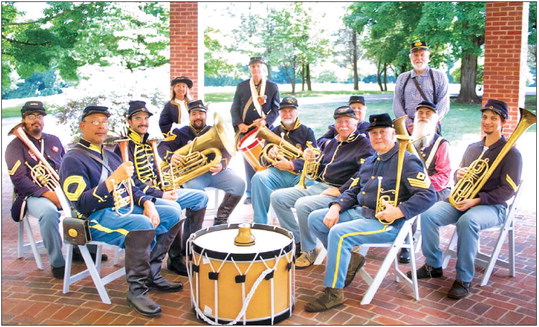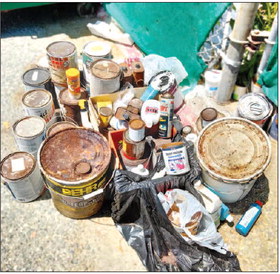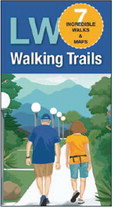EARTHQUAKE PREP: We live in a higher risk area; the best time to prepare is now
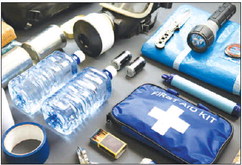

California has endured more than its fair share of destructive earthquakes in the last few decades—among them Sylmar in 1971, Whittier Narrows in 1987, Loma Prieta in 1989 and Northridge in 1994.
All those quakes caused major damage and resulted in loss of life. But they were not true seismic catastrophes, according to the experts. Much bigger quakes are possible, more to the scale of the infamous 1906 San Francisco quake.
That monster earthquake struck the coast of Northern California at 5:12 a.m. on Wednesday, April 18, 1906, with an estimated magnitude of 7.9. Devastating fires broke out in San Franciso and lasted for several days. More than 3,000 people died. Over 80 percent of the city was destroyed. It is remembered as one of the deadliest earthquakes in U.S history, according to Wikipedia. It caused the greatest loss of life from a natural disaster in California’s history.
Southern California Scenario
In 2008, the U.S. Geological Survey published a 308-page ShakeOut Earthquake Scenario that is still used today. More than 300 scientists and other experts, led by well-known seismologist Lucy Jones, took part in drafting scenario.
It’s a hypothetical look of what a magnitude 7.8 earthquake on the San Andreas fault would look like. Jones, who has visited Leisure World in years past to talk about readiness, said the massive study makes it painfully clear that people need to be prepared.
In the report, geologists determined which section of the San Andreas was most likely to blow and studied the scenario that would unfold in the event of a 7.8 magnitude tremor—55 seconds of strong shaking in downtown L.A.—more than seven times the duration of the last big L.A.-area temblor, the 1994 Northridge quake, a magnitude 6.7 generated along a previously unknown fault.
There would be landslides and liquefaction and massive damage to roads, rail lines, water conveyance tunnels and aqueducts, electrical and natural gas lines, and telecommunications cables.
In an earthquake of this size, the shaking will last for nearly two minutes. Such an earthquake will cause unprecedented damage to Southern California—greatly overshadowing the massive damage that occurred in Northridge’s 6.7-magnitude earthquake in 1994.
The ShakeOut Scenario estimates a 7.8 magnitude earthquake will cause over 1,800 deaths, 50,000 injuries, $200 billion in damage and other losses and severe, long-lasting disruption.
Unlike the COVID-19 crisis, there will be no panic-buying; the stores will be closed and supply lines, cut. One way to protect yourself is to make note of the items you would want in a disaster situation and keep them on hand at all times because an earthquake will come with no notice. Buy food that has at least a one-year shelf life—peanut butter, tuna fish, canned fruit.
Everyone needs a disaster supplies kit with essential food, water, and supplies for at least three days and up to two weeks. Keep this kit in a designated place and have it ready in case you have to leave your home quickly. Make sure all family members know where the kit is kept. It should be in one container and ready to “grab and go” in case you are evacuated (for a specific checklist, see page 15)
If an earthquake happens, protect yourself right away.
• If you are in a car, pull over and stop. Set your parking brake.
• If you are in bed, turn face down and cover your head and neck with a pillow.
• If you are outdoors, stay outdoors away from buildings.
• Do not get in a doorway.
• Do not run outside.
• Drop, Cover and Hold On. That means to drop, cover your head and hold on where you are. It’s safest not to move until the shaking stops.
“We have an irrational fear of earthquakes, partly because they create a feeling of being out of control,” said “Earthquake Lady” Lucy Jones in a February 2012 Smithsonian magazine article by Amy Wallace. “We’re afraid of dying in them, even though the risk is extremely small. You’re almost undoubtedly going to live through it. And probably your house is going to be OK. It’s the aftermath that we need to prepare for.”
In the event of a big one, scenarios show that a rupture 180 miles away will cause shaking of up to two-and-a-half minutes in Seal Beach; 300,000 buildings will be compromised, 18,000 people will die, mostly from falling debris, and there will be $213 billion in damage.
All highways will be affected in the region’s eight counties.
Ham radio operators will be your best friends. And Leisure World has an active Radio Service Club that will likely be the first interface between residents and local emergency services. In addition, there is an active CERT community led by GRF Safety and Emergency Coordinator Eloy Gomez and LWer Phil Mandeville. CERT stands for Community Emergency Response Team.
Many of your neighbors and friends have attended CERT training and are certified in basic emergency response skills, such as extinguishing small fires, providing basic medical aid, searching for and rescue victims safely, and organizing themselves and spontaneous volunteers to be effective. CERT training is typically held twice a year in Leisure World and publicized in the LW Weekly.
This is a huge benefit to residents, as fire and police departments will be dealing with the most serious situations and may be unable to respond quickly to issues in Leisure World.
Mutual aid coming from Northern California or San Diego could take weeks to arrive.
Immediately After An Earthquake
Right after an earthquake, people may need to evacuate, help the injured and prevent further damage.
Since LWers are near the ocean, it might be necessary to head for higher ground as soon as they can safely move.
Tsunami waves can arrive within minutes.
• Go on foot. Roads and bridges may be damaged.
• Stay away from the coast until officials tell you it is safe to return. The danger may last for days.
• If you need to evacuate to a shelter, take your “grab-and-go” bag. Shelters have limited space.
Prevent further damage:
• Be prepared for aftershocks. Stay away from anything that looks like it may fall.
• Large fires are a sign to evacuate. If you have a fire extinguisher handy, put out small fires.
• Unplug appliances and electronics. When the power comes back, damaged appliances and electronics could start a fire.
Let people know:
• Register on the Red Cross SafeAndWell. org website so people will know you are okay.
• Phone service may be out. When possible, text or call your out-of-area contact and tell them where you are, then stay off the phone. This will allow calls to be made for emergencies.
Stay informed:
• Surf the radio dial to find a station that is on the air. Listen to the NOAA Weather Radio for emergency information.
The First Days after The Earthquake
• Do not enter your home until you know it’s safe.
• Check for damaged electrical wiring and broken water pipes.
• Monitor local radio or television reports about where to get emergency housing, food, first aid, clothing and financial assistance.
• Check on your neighbors.
• Use your refrigerated and frozen food first and save the canned goods for later.
• Take pictures of damage to your property and home. • Contact your insurance agent or company right away to begin your claims process. Keep records of any repair or cleaning costs.
The First Weeks After the Earthquake
• If the electricity went off and then came back on, check your appliances or electronic equipment for damage.
• Contact the Federal Emergency Management Agency (FEMA), U.S. Small Business Administration (SBA), or other federal and state agencies to find out about financial assistance for your home, apartment, farm or business.
Leisure World is an active best participant in the Great California Shakeout, an annual statewide earthquake drill. If people practice the “drop, cover and hold” technique, their bodies will know what to do when the unthinkable happens.
